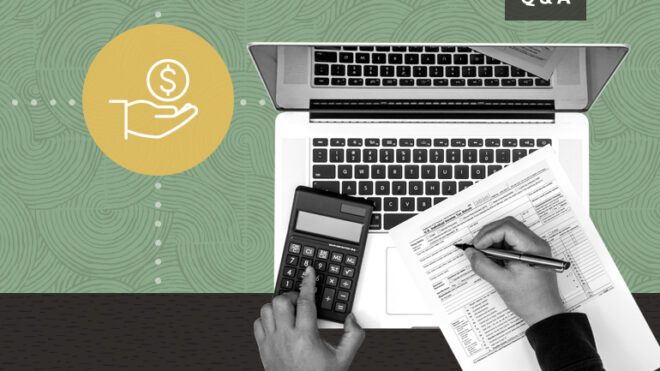What CFOs Need to Know About Intangible Asset Valuation in 2021
By Megan O’Brien with Mark Zyla, managing director of Zyla Valuation Advisors
- Intangible assets — like brand, IP, algorithms, and patents — have become an increasingly large part of a business valuation.
- It’s essential to get an accurate valuation of intangible assets and any impairment that might have occurred.
- Financial and accounting standard updates, along with a focus on ESG, are also affecting stakeholders’ approach to intangibles valuation — and the topic isn’t going away anytime soon.
The concept of intangibles valuation made an unusual foray into the spotlight recently when a judge resolved a dispute over the intellectual property of Michael Jackson. At the time of Jackson’s death in 2009, the executors of the will pegged the singer’s net worth at just over $7 million. However, the IRS said a figure of $1.12 billion was more appropriate.
The disparity came largely from the fact that the IRS valued intangible assets — Jackson’s image and likeness, his interest in a trust that included a Sony/ATV Music stake, and interest in the trust that contained his music-publishing catalog — at hundreds of millions of dollars. The estate, however, argued that those assets were nearly valueless due to Jackson’s tarnished image, highlighting the role of amortization in intangible asset valuation.
Nearly eight years later, the judge erred towards the IRS’s valuation of the music-publishing catalog trust but ruled in favor of the estate in regards to the other valuation components. The incident displayed the growing importance and complicated nature of intangibles valuation.
Brainyard spoke to Mark Zyla, managing director at Zyla Valuation Advisors and chairman of the International Valuation Standards Council’s Standards Review Board, at the end of 2020 about the widening valuation gap of intangible assets pre- and post-pandemic.
Despite the country opening back up, intangibles valuation continues to be a topic of concern — and will likely remain so for the foreseeable future. With the Financial Accounting Standards Board (FASB) passing a new update on valuation earlier this year and another update potentially on the way, we asked Zyla for updates in the realm of intangibles valuation.
Brainyard: Why does intangible asset valuation continue to be important?
Mark Zyla: The trend toward more value in companies being attributable to intangible assets continues. As one example, the market to book ratio of the S&P 500 is approximately 4.5 to 1 right now, meaning for every dollar of equity on the financial statements in the S&P 500, the market is valuing it at 4.5 times that number. The difference is primarily due to the market recognizing the value contributed by intangible assets, which don’t appear on the company’s financial statements.
As we’ve witnessed during the current economic upheaval, more value is being placed on companies whose business model incorporates intangible assets since they have better withstood and, in many cases, thrived in spite of the challenges brought on by the pandemic. This trend is likely to continue.
Also, more awareness of environmental, social, and governance (ESG) issues as they relate to company valuations directly impacts the value of intangible assets.
BY: In March, the FASB issued Accounting Standards Update (ASU) 2021-03. What does this mean for businesses?
MZ: The accounting standards allow private companies to choose to amortize goodwill over a period of up to 10 years and only test for impairment if a “triggering event” occurs. (A triggering event is a condition in the macroeconomic environment, the industry, or the company that may lead management to believe the goodwill recorded on their financial statements may be impaired.)
Then, the FASB issued ASU 2021-03: It allows private companies who already made the choice to amortize goodwill to test for impairments at the end of the period rather than on the specific date the impairment is deemed to have occurred. This helps private entities better determine the impact of economic events — like the consequences of the pandemic — on goodwill.
BY: The FASB has another project in motion concerning intangible assets and accounting for goodwill. Can you speak more to that and its potential impact on the business?
MZ: In July 2019, the FASB issued an Invitation to Comment (ITC) on the current accounting model for goodwill for public entities. In late 2020, the board recommended changing the rules to allow public companies to amortize goodwill — though the rules haven’t been changed. The International Accounting Standards Board (IASB) has a similar project under consideration.
In April of this year, the FASB discussed which types of identifiable intangible assets provide useful information about the value of assets acquired in a transaction and which types should perhaps be categorized as goodwill. The board decided to gather more information; it didn’t issue new rules or change previous recommendations.
Securities regulators have urged the FASB and IASB to adopt similar methodologies for the accounting treatment of goodwill. While the proposed changes to the standards perhaps simplify the accounting treatment of goodwill for preparers, the users of financial statements have expressed concern that they reduce transparency.

15 Accounting Trends to Pay Attention To: New standards aren’t the only changes coming for the accounting world this year. Other hot topics include data analytics, data security, and “proactive accounting.”
BY: Why are internally-created intangible assets treated differently than acquired assets?
MZ: Historically, the value contributed by intangible assets was minor compared to tangible assets. If you think about large, capital-intensive industries such as automotive, steel, and energy, capital infrastructure creates most of the value of companies. The accounting standards reflected this.
However, in the late 1990s, the internet began to be monetized, leading to more M&A activity. The accounting standards evolved to capture the fair value of individual assets acquired through a merger or acquisition, including intangible assets. The accounting standards are still lagging, though, in recognizing internally-generated intangible assets.
BY: Investors are paying more attention to ESG, a relative newcomer to business valuation. How does ESG impact valuation?
MZ: There is increasing empirical evidence that a company’s focus on ESG policies may enhance its value. Also, many investment funds incorporate an ESG focus. The International Financial Reporting Standards (IFRS) Foundation, which sets international accounting standards, has a project to gauge support for the inclusion of ESG standards in financial reporting. Lastly, the International Valuation Standards Council (IVSC) has a number of projects relating to the impact of these factors on valuations of businesses and real estate.
A company’s societal impact policies which either directly impact cash flow or cost of capital have a valuation impact. Each of these trends makes it increasingly important for a valuation specialist to consider ESG factors that may impact a valuation.
BY: Which other developments in intangible assets valuation should businesses be aware of?
MZ: As we’ve covered, a number of developments have impacted the valuations of intangible assets over the past several years. Businesses have become increasingly aware of the value that these assets contribute. The valuation profession has developed much more sophisticated models to measure the value of intangible assets. And the accounting profession is becoming more aware that financial reporting isn’t adequately reflecting the value contributed by these assets.
The Bottom Line
Bloomberg writer Sarah Ponczek summarized the current importance of intangible assets neatly in a recent column.
“Take all the physical assets owned by all the companies in the S&P 500,” she wrote, “all the cars and office buildings and factories and merchandise, then sell them all at a cost in one giant sale, and they would generate a net sum that doesn’t even come out to 20% of the index’s $28 trillion value. … Back in 1985, before Silicon Valley came to dominate the ranks of America’s biggest companies, tangible assets tended to be closer to half the market’s value.”
With the move to a “digital economy” drastically changing the way we value companies, make sure that you’re valuing yours correctly.
Resources for Intangible Asset Valuation
| American Institute of Certified Public Accountants (AICPA) | Get technical guidance from the AICPA’s thought leadership pieces, most notably its Guide to Intangible Asset Valuation, Quick Reference Guide and business valuation resource library. |
| The Appraisal Foundation | This nonprofit gives guidance on recognized valuation methods and techniques in the form of white papers, webinars and Q&As. |
| The International Valuation Standards Council (IVSC) | This organization has a uniform set of multidisciplinary, global valuation standards known as the International Valuation Standards (IVS). |
About Our Expert

Mark L. Zyla is a Managing Director of Zyla Valuation Advisors, LLC, an Atlanta-based valuation and litigation consultancy firm. Mark is the chairman of the Standards Review Board of the International Valuation Standards Council (IVSC), where he recently served on the Forensic and Valuation Services Executive Committee.




